Truck Builders of Poland: the Years 1945 to 1995
Among post-war collectible Eastern European trucks and commercial vehicles still cluttering the back lots, sheds and side streets of longitude 15 to 30 east and latitude 40 to 60 north, the Fiat, Jelcz, Lublin, Nysa, San, Star, Syrena, Warszawa and Zubr have all been manufactured in Poland. During the 1950s when the Soviet regime greatly expanded industry in Poland, most vehicle design activity took place at BKPMOT, an acronym which translates to mean Bureau of Motor Vehicle Design. Indirectly, it has been the continuation of the pre-war PZInz motor vehicle design offices.
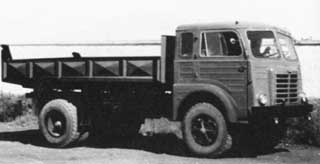
FSO was the first large automobile manufacturing plant built after World War II in Poland. To date, it is located in Warsaw, and although FSO translates to mean "Factory of Passenger Automobiles," pickups under the name Fiat, Syrena and Warszawa, each of them quite different, were also built there.
A smaller FSO R&D facility is located just outside Warsaw in Falenice where Deputy Directory W. Musz was kind enough to show me the museum in September of 1996. The collection includes numerous old prototypes, including an unusual 4x4 light truck, vans and pickups, but it is not open to the public, and since FSO was in partnership with the Korean firm of Daewoo as of March 1996, I had to get special permission from the Company Director, Jin-Chul Suka, which was arranged by Marian Karwas, president of Auto Technika Publications. Even after these complicated arrangements, photography was not permitted, and I was not allowed to see the assembly plant. It was impossible to tell whether the atmosphere of secrecy is a hangover from the socialist era or the policy of the new Asian investors. Probably both. Visiting the GM plant was no problem.
FSO was originally organized in 1948 when the Soviet-controlled Polish government signed an agreement with Fiat to build cars in Warsaw. Such an arrangement had worked very well before the war, so it was logical to turn to Italy for licensing agreements, but Italy joined NATO and "strategic technology transfer" was disallowed. The Polish government soon found another partner for the license it was seeking. The new cooperation was to be with GAZ (Gorkovskij Awtomobilnyj Zavod) located in Gorki, U.S.S.R.
In 1956 my father travelled to the GAZ factory on business from FSO. The GAZ plant was established in 1932 when the Ford factory, first built in Berlin-Plotensee, Germany in 1926, was sold to the Soviet government, making room for a whole new Ford factory that Henry Ford was more than glad to sell to the German industry. (Henry Ford later accepted the Iron Cross from the Nazi regime).
GAZ trucks and passenger cars were entirely derived from Ford designs of the 1920s. The Gorki plant used Ford drawings with original logos for many GAZ component blueprints through the 1950s. This was nearly twenty-five years after the factory was moved there. Also, dimensions were still shown in inches on the drawings despite the fact that the U.S.S.R. had adopted the metric system.
The first GAZ trucks were called the GAZ-A and the second the GAZ-AA, the latter being 4x4 versions of the 1929 Ford Model AA truck. The twin bogie Model AAA was also built using a 50hp four-cylinder M-l side-valve engine. These later became the GAZ-MM, which were squared-off military versions rolling off the assembly plant in 1938 until 1950. The GAZ-M1 got its start in 1936 and was based more on Russian design. The Ford-based GAZ chassis were used to build ambulances, dump truck, halftracks and armored cars, among other applications. Several other larger GAZ trucks were built during and after World War I.
There are still a number of GAZ trucks in Poland, most of them acquired as military surplus, and some are being restored by dedicated new owners. The connection between GAZ and FSO became inextricable when the FSO factory was opened in Warsaw in 1951.
The Warszawa was actually a GAZ 20 Pobieda (meaning "Victory"), and when production plans were delayed at FSO, a few Pobiedas were brought from Gorki and the emblems were switched with "Warszawa" chrome plates. Some say that the 1951 M-20 Warszawa closely resembles the American Ford of that era. The Soviet government did not recognize Western European or American patents, and much technology was simply adapted without any authorization from the West; a policy that had the effect of really heating up the Cold War.
The Russians signed an agreement to help develop the factory in Warsaw so that it could be capable of a production number of 25,000 units per year. That number was not reached until 1965 when the combined production of the Warszawa and Syrena for the year was 27,000 vehicles. Parts were imported from the U.S.S.R. until 1956 when all components were manufactured at FSO.
By 1955, a pickup version of the Warszawa was introduced. It was powered by the same 50hp four-cylinder 2120cc side-valve engine and used the three-speed manual transmission that the sedan version used. Production of the Warszawa was 4,015 for 1955 and 6.105 for 1956, but these numbers were not broken down between pickups and sedans, both of which were interspersed on the same assembly line as can be seen from old photos.

In 1957, FSO introduced the Syrena ("Mermaid," which is also the emblem of the city of Warsaw), and this passenger car was also built as a pickup, the Syrena was entirely an FSO design. Models 101 and 102 were powered by a 27hp 746cc two-cylinder two-stroke engine and had a four-speed transmission. Production amounted to 200 of the front-wheel-drive Syrena from the first year. A three-cylinder two-stroke engine was introduced for the Model 103. Commercial versions were called the Syrena R20 pickup or Model 105 Bosto van.
By 1960, production of the Syrena jumped up to 4,025 while 14,825 Warszawa vehicles were built, including ambulances, taxis and police cars. Both Warszawa passenger cars and pickups were exported to Eastern Bloc countries as well as Thailand, Vietnam and Indonesia, among other Far East countries. Photos show barges carrying both sedans and pickups down the Vistula River to be later loaded onto ships at Gdansk where Lech Welesa and Solidarity got their start.
In 1964, the Warszawa was updated as Model 223 and Model 224. Thus far, only the grille and interior had changed over the years, but that year the entire rear section of the car was redesigned to a "notch back" from the earlier "torpedo back," also allowing for a station wagon configuration, both with a four-cylinder overhead-valve engine designated as S-21. The station wagon version was used for commercial cars including ambulances and police cars. Most of the Warszawa and Syrena pickups were furnished with a canvas canopy, reflecting the weather conditions of Northern Europe.
The Polish government continued to look West for its partners, and in 1968 another agreement was reached with Fiat to produce vehicles under license at FSO. For 1968, the Fiat Model 125p production in Warsaw was 7,101. A unique pickup version was also introduced with either a four-cylinder 1300cc engine or a more powerful ISOOcc unit. The Fiat 132p was also produced at FSO. The year 1972 was the last year the Syrena was produced (with 22,134) as the production number), and the Warszawa's production ended a year later with only 4,266 units for that year.
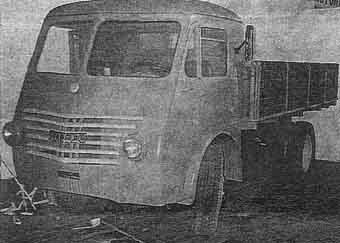
Star trucks began production in 1947 in Starochowice, a city in central Poland. The first Star trucks were designed in Warsaw and built nearby, and the very first 2-ton Model 20 was powered by an 85hp four-cylinder engine. The truck was quickly upgraded for heavier hauling and a lOOhp gasoline engine was adapted until 1961, when a diesel engine was also available. The Jelcz and Lublin marques were also built in Poland, but these have been heavier trucks with capacity up to 32 tons by 1978.
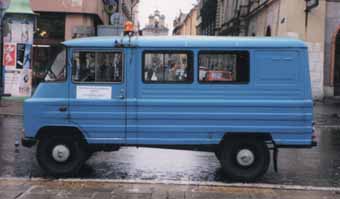
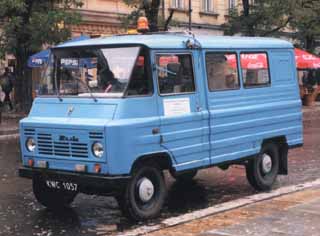
The year 1958 was the year two light truck makes began production in Poland. From 1951 in Lublin, the 2-ton GAZ-51 was built (with a Lublin emblem) at the location of the earlier MW LRL factory. A multi-purpose quarter-ton covered express by the name of Zuk came off the assembly line seven years later. It was designated as the Model A-03, and soon a whole list of iterations (including vans, pickups, ambulances) under the model numbers A-05, A-06, A-07, A-13, A-14 and A-15 went into production. They were powered by the S-21 four-cylinder engine.
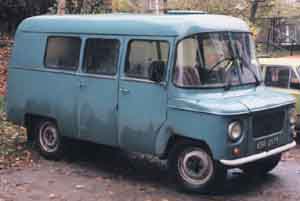
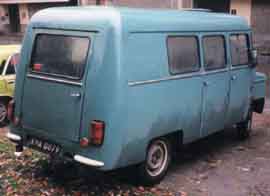
The other new make of 1958 was the Nysa, named after the city of Nysa in Poland. At first, the factory built bodies for other makes in Poland. Then the Nysa light commercial van and microbus, with similar applications as the IHC Travelall and GMC Suburban, began production in 1968. A variety of Nysa half-ton capacity vehicles were built under designations C-521, F-521, M-521, S-521 and T-521, again powered by the four-cylinder S-21 engine. These older Zuk and Nysa models are now long out of production, but many were still on the road taking care of business in the late-1990s.
By the mid-1990s, Poland had become a hotbed of auto and truck production. The Jelcz factory begun assembling Volvo heavy trucks which are marketed throughout the European continent. The Polonez had been built at FSO as well as the tiny Fiat two-cylinder 600. General Motors constructed an assembly plant next door to FSO in Warsaw and had started building a one-million square foot factory in Gliwice in Eastern Poland. Star had modernized its design and production and continued manufacturing. Mercedes-Benz Vito light commercial vehicles were to be assembled at Jelcz according to the latest licensing agreement, and the Korean Daewoo firm had made an enormous investment. Under free enterprise, modernization and commerce were moving forward at an amazing pace in Poland, leaving behind, among other things, old cars and trucks for the historians and true vehicle enthusiasts.
return to part 1: the years 1928 to 1939